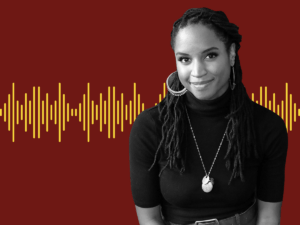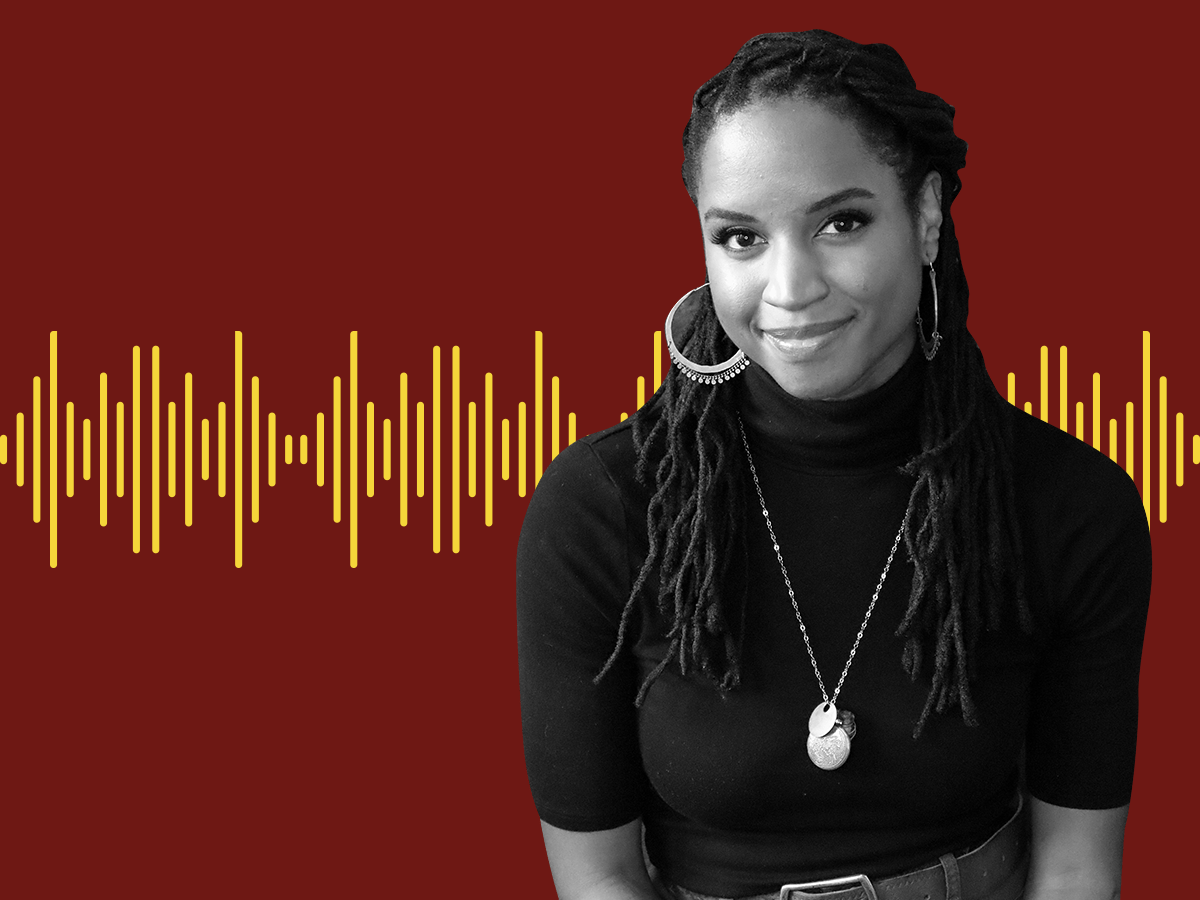
Racial injustice rears its ugly head in a profound and undeniable way, and we react, expressing our collective outrage with protests and calls for justice. But then, all too often, after a time, the public writ large goes back to the same apathetic hegemony that created the problem.
With nothing substantively changed, the cycle repeats: more outrages, more protests, and little enduring change in our racial body politic. Why does it appear that opportunities to bring about enduring societal transformation seem to elude our grasp? How many more people need to die needlessly? When will enough be enough? My aim is to provide insights as to how we can accomplish sustainable policy change for justice and freedom by acknowledging and working with the rhythms of the struggle.
The Theory of Punctuated Equilibrium: What It Explains
Policy change and social change, in many cases, are alike in being frequently so incremental that the system as a whole appears to remain in a state of unending contested stasis. Advances are made and reversed, or the approaches to the reinforcement of a static state change the field of contest but never the outcomes. However, there are those times—and perhaps we are in one now—when we observe a significant shift in the public’s frameworks of understanding. Then, policy frameworks can be changed in such a way that they successfully can resist a return to a former state.
In 1993, Frank Baumgartner and Bryan Jones put forth the Punctuated Equilibrium Theory (since refined) to provide an explanation and framework for policy change that includes these long periods of stasis interrupted by the occasional pivot of real lasting consequence. I believe that understanding the theory will aid those who wish to create a sustainable movement for justice by naming a familiar social pattern so that activists can take it into account in their strategies.
Incrementalism as the Familiar State
Early policy process models have emphasized incrementalism as the norm for how decisionmakers operate—and should operate—in order to prioritize stability in the system. This essentially protects the status quo from any sense of extreme disequilibrium.
The assumption of incrementalism as the norm does not, however, take into account those quantum leaps that seem so rare—the times when a policy framework dramatically shifted away from historical precedent in such a way as to substantively contradict its precepts.
How organizations and institutions process information is a fundamental question addressed by the Punctuated Equilibrium Theory. A punctuation is a rapid change in policy outcomes attributed to shifts in public attention or preferences.1
Issues that receive enough collective attention make it onto the policy agenda, while others are overlooked. A policy punctuation may appear due to the accumulation of a series of comparatively small occurrences (e.g. tobacco regulation), or after a large event that cannot be ignored, as in the televised violence of the march known as Bloody Sunday on March 7, 1965 in Selma, Alabama. Or, some combination of the two, as seems to have occurred in the first half of 2020.
Civil rights leaders of the past understood that the purpose of a march, boycott, or other acts of civil disobedience was to produce policy salience contributing to a positive feedback process regarding civil rights legislation. Positive feedback is “when a change, sometimes a fairly modest one, causes future changes to be amplified.”2 Equal rights for African Americans was gaining momentum even before the march, but the public outcry against the violence in Selma was credited as a major impetus to Congress passing the Voting Rights Act in August of that same year.
Seizing Definitional Power
Issue definition in all of this is enormously important, because whoever successfully defines the issue usually wins the argument.
One of the strengths of the African American civil rights movement was its ability to appeal to the Constitution and state that the demands of the “American Negro” were for the rights of citizenship promised by the Constitution. In his I Have a Dream speech, Dr. King used the words “promissory note” when describing the words in our foundational documents, as put forth by the framers of our republic, ensuring freedom for Americans. The intention was to characterize the movement’s demands as moral and constitutional arguments, appealing to the conscience of the nation and its sense of identity.
Protest signs declaring “I AM A MAN” were clarion calls urging the US to recognize the way it had failed to offer Black America the rights of full inclusion as citizens. Indeed, as New York Times reporter Nikole Hannah-Jones has noted in her Pulitzer-winning work, the 1619 Project, African Americans have been the most vigorous advocates for US democracy. They fought for rights denied to them, paving the way for other groups to achieve their own rights both in the United States and abroad.
Bringing the concept into the present day, police unions and associations have successfully defined the narrative around their own profession as beyond reproach even as their actions as a system consistently victimize people of color. Police unions and associations have fought on many levels to retain the narrative of the thin blue line of defense against efforts to hold police officers accountable for their actions against unarmed citizens. Their characterization of any challenges to their behavior as an attack on the police has resulted in large-scale immunity from prosecution.
In order to bring about desired change, an issue must be portrayed properly when placed on the policymaking agenda with a suitable “policy image,” a combination of emotional overtures and empirical claims.3
The US political system is designed to resist change. However, again, static forces can be overcome through mobilizations that successfully call into question the very narratives that most deeply but often almost invisibly inform and frame the most static of public discourses. These successful challenges to habits of thought require a threshold of public attention, however, and sometimes these emerge quite suddenly.
“I Can’t Breathe” as Clarion Call
A prelude to the George Floyd murder was the fact that COVID-19 was disproportionately affecting people of color as a function of systemic racism already present in the minds of the public, and the fact that the virus presented at first as a respiratory problem was vividly omnipresent in coverage.
Sign up for our free newsletters
Subscribe to NPQ's newsletters to have our top stories delivered directly to your inbox.
By signing up, you agree to our privacy policy and terms of use, and to receive messages from NPQ and our partners.
That evocative imagery of George Floyd’s death, with his last words being “I can’t breathe,” somehow pulled an issue long in contested stasis into a space where a quantum leap of consciousness was potentially achievable.
The protests made it widely known that the persistent pattern of violence perpetrated against Black people is, in fact, not the outbreak of a few rogue actors but the enacting of collective assumptions around policing. Focused attention on Black lives taught a wider swath of citizens that police violence against people of color is the consequence of white supremacist policing systems and structures, rooted in slavery, that have controlled by brute strength people of African descent on this continent for centuries.4
That attention has created a period of positive feedback, as illustrated by recent legislation in Georgia and Mississippi. Georgia was one of only four states without a hate crime bill—until this year. The Georgia House and Senate approved the measure and it was promptly signed into law. Mississippi voted to remove the Confederate flag emblem, which has been on the state flag since 1894. We can anticipate further legislative efforts as cries for racial justice continue in this season. However, we have been in this place before where we made progress, then the tide shifted.
The Challenge of Inadequate Policy Reform and the Need to Go Big
Punctuated Equilibrium Theory, while providing strategic insight, also provides a cautionary tale for policy advocates. Governments and humans are boundedly rational.5 Because of our cognitive limitations, we lack the ability to give attention to any issue for long. The momentum behind the civil rights movement was stalled when the country’s attention turned to the Vietnam War. Just as the news media shifted its attention from COVID-19 coverage to the antiracism protests—until the realization dawned that the two issues are closely related—there is the potential that another attention-shifting event may occur that transfers the nation’s gaze away from a racial justice agenda. How should we then proceed in this season? Allow me to use police reform as an example.
In many instances, police reform advocates have emphasized defining the problem (e.g. racist police) associated with onerous police actions in making their policy recommendations. The use of body cameras was supposed to reduce incidences of police misconduct and increase accountability. Regrettably, the body camera policy did not account for the systemic issues associated with police discretion and the low likelihood that officers would be charged by local district attorneys.
A narrowly circumscribed problem or issue definition defines and constrains the parameters for a solution. As such, calls to “defund the police” provide an opportunity for broad sweeping transformations as we radically reconstruct our conceptions of policing for the twenty-first century. Racial justice advocates who seek change in the area of policing must also address the “who” and the “what” of policy change. The “who” speaks to who can bring about the change and the “what” speaks to the implementation of the policy.6
Lawrence Sherman provides guidance and suggests that reformers focus their efforts on the governors and state legislatures who oversee police departments within their states. Sherman says, “When it comes to regulating police agencies, the states are the best target because that is where the power is—the Constitutional power to create, and destroy, police agencies and to license, or revoke, the power of any individual to serve as a police officer.”7
Sherman then proposes that the appropriate action for implementation would be to have the states create an independent office of inspector general for police services that provides supervision and accountability.8 The oversight agency would be charged with collecting and analyzing individual and departmental performance data and have the authority to certify and also de-certify officers and their departments when appropriate.
I agree with Sherman’s approach, in the short-term, while taking advantage of the punctuation. In the longer term, I also concur with Barry Friedman who advocates for a re-visioning of police functioning to “reduce the footprint of force and law.”9 He looks at the constituent parts of police activity and questions the degree to which the police have the requisite skills to perform their daily functions.
Friedman observes that, “Crimefighting actually is a very small part of what police do every day, and their actual work requires an entirely different range of skills, among them: mediation skills to address conflict, social work skills to get people the long-term solutions they need, interviewing and investigative skills to really solve crimes, and victim assistance.”10 As a policy tool, the police should be used for limited operations. Using the right tool, for the right task, at the right time is the rule.
The late congressman John Lewis declared in his speech at the March on Washington that we can no longer wait for freedom, but that we want our freedom now. Advocacy groups, activists, and concerned citizens can use the knowledge of the Punctuated Equilibrium Theory to develop strategies to keep racial policy reforms on the macropolitical agenda and continually define the social/policy change issue in a manner that mitigates the forces of stability that suppress movements for change.
Carpe Diem
The infrequency of policy breakthroughs suggests that most efforts to bring them about will fail. Entrenched interests and ideology will retain their dominance; challengers will be unable to gather sufficient resources, attention, and momentum. Nonetheless, such failed efforts may build a foundation for later success when conditions are more favorable by undermining the prevailing policy image, by mobilizing new interests, and by forming new coalitions. Even knowing that the odds are long, effective policymakers continue to work on their issues in order to be ready and primed when opportunities arise.
—Robert Repetto, Punctuated Equilibrium and the Dynamics of US Environmental Policy.
The point cannot be overstated: If we want to be truly free, we cannot afford to let this moment pass. Otherwise, I fear that we will be here again.
References
- Baumgartner, F. R., Jones, B. D., & Mortensen, P. B. (2014). Punctuated equilibrium theory: Explaining stability and change in public policymaking. Theories of the policy process, 8, 55-101.
- Durr, Marlese. “What is the difference between slave patrols and modern day policing? Institutional violence in a community of color.” Critical Sociology6 (2015): 873-879.
- Friedman, Barry, Disaggregating the Police Function (March 30, 2020). U. Pa. L. Rev. (2020-21 Forthcoming).
- Hannah-Jones, N. (August 14, 2019). “The Idea of America,” The 1619 Project. The New York Times.
- Hamer, F.L. (1964, December 20). “I’m Sick and Tired of Being Sick and Tired.” As published in Speeches of Fannie Lou Hamer, To Tell It Like It Is. Accessed July 23, 2020.
- Jones, B. D. (2003). “Bounded rationality and political science: Lessons from public administration and public policy.” Journal of Public Administration Research and Theory, 13(4), 395-412.
- Jones, B. D., & Baumgartner, F. R. (2012). “From there to here: Punctuated equilibrium to the general punctuation thesis to a theory of government information processing.” Policy Studies Journal, 40(1), 1-20.
- Sherman, L.W. (2020). Targeting American policing: Rogue cops or rogue cultures?. Cambridge Journal of Evidenced-Based Policing, 1-12.
Notes
- Jones 2003: 403; Baumgartner, Jones, and Mortensen 2014: 64
- Baumgartner, Jones, and Mortensen 2014: 61
- Ibid.: 62
- Durr 2015: 3
- Jones and Baumgartner 2012: 3
- Sherman 2020: 5
- Sherman 2020: 6
- Sherman 2020: 10
- Friedman 2020: 2
- Friedman 2020: 2












